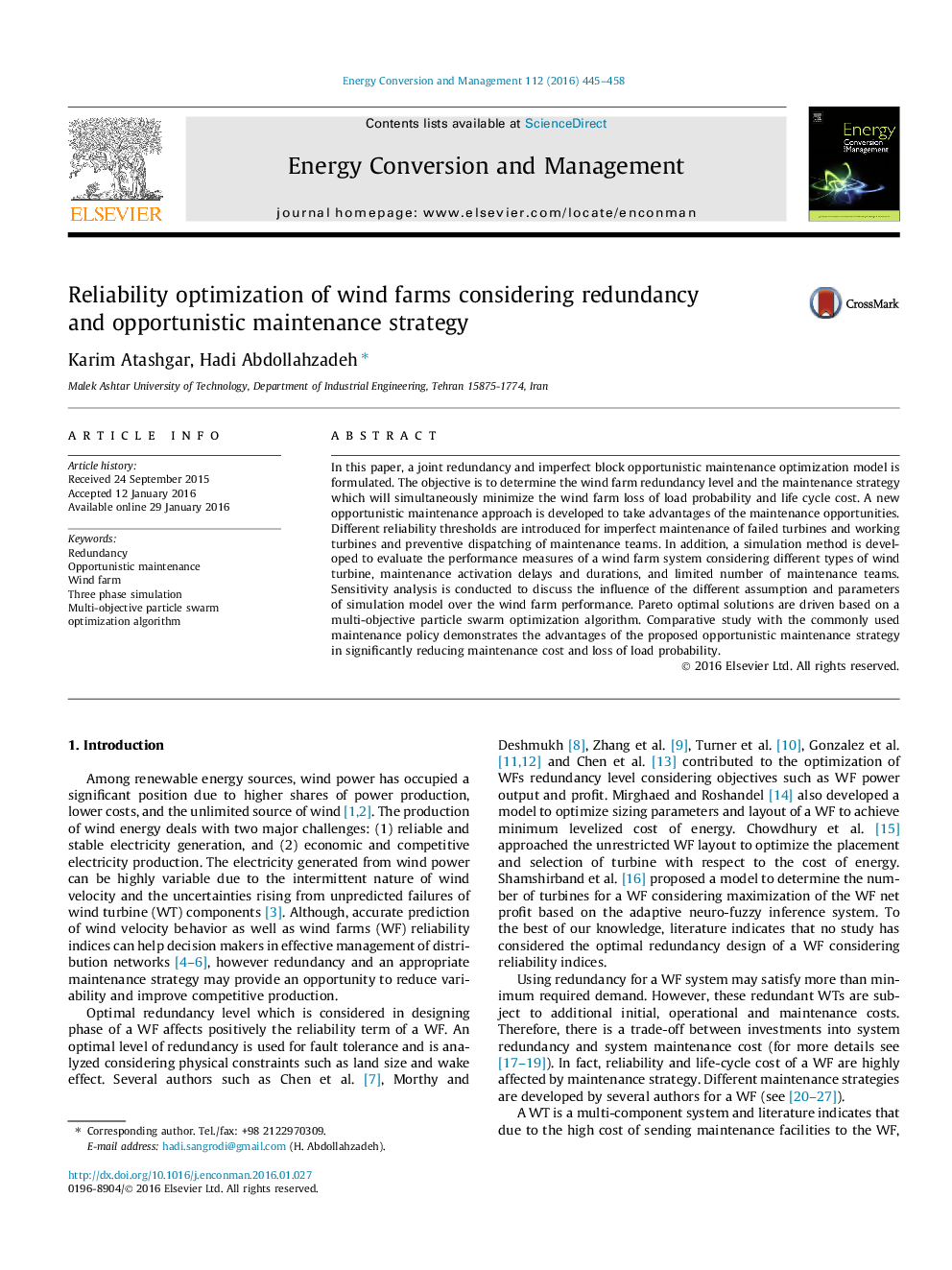| Article ID | Journal | Published Year | Pages | File Type |
|---|---|---|---|---|
| 763525 | Energy Conversion and Management | 2016 | 14 Pages |
•A new bi-objective redundancy and maintenance optimization model is developed.•The trade-off between wind farm configuration and the maintenance strategy is investigated.•A new imperfect block opportunistic maintenance strategy is developed.•A three-phase discrete event simulation is used to evaluate the performance measures.•The comparative analysis addresses the capability of the proposed model.
In this paper, a joint redundancy and imperfect block opportunistic maintenance optimization model is formulated. The objective is to determine the wind farm redundancy level and the maintenance strategy which will simultaneously minimize the wind farm loss of load probability and life cycle cost. A new opportunistic maintenance approach is developed to take advantages of the maintenance opportunities. Different reliability thresholds are introduced for imperfect maintenance of failed turbines and working turbines and preventive dispatching of maintenance teams. In addition, a simulation method is developed to evaluate the performance measures of a wind farm system considering different types of wind turbine, maintenance activation delays and durations, and limited number of maintenance teams. Sensitivity analysis is conducted to discuss the influence of the different assumption and parameters of simulation model over the wind farm performance. Pareto optimal solutions are driven based on a multi-objective particle swarm optimization algorithm. Comparative study with the commonly used maintenance policy demonstrates the advantages of the proposed opportunistic maintenance strategy in significantly reducing maintenance cost and loss of load probability.
